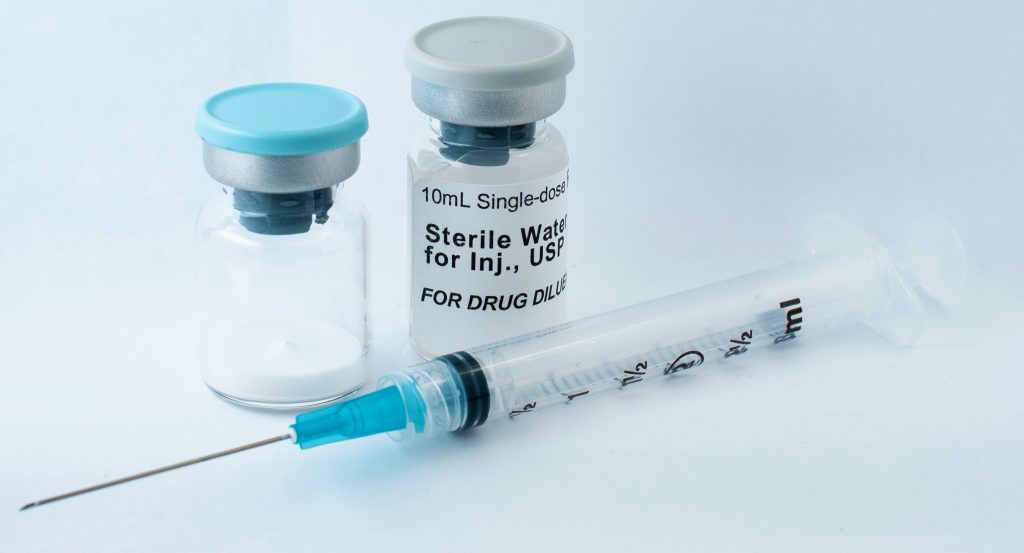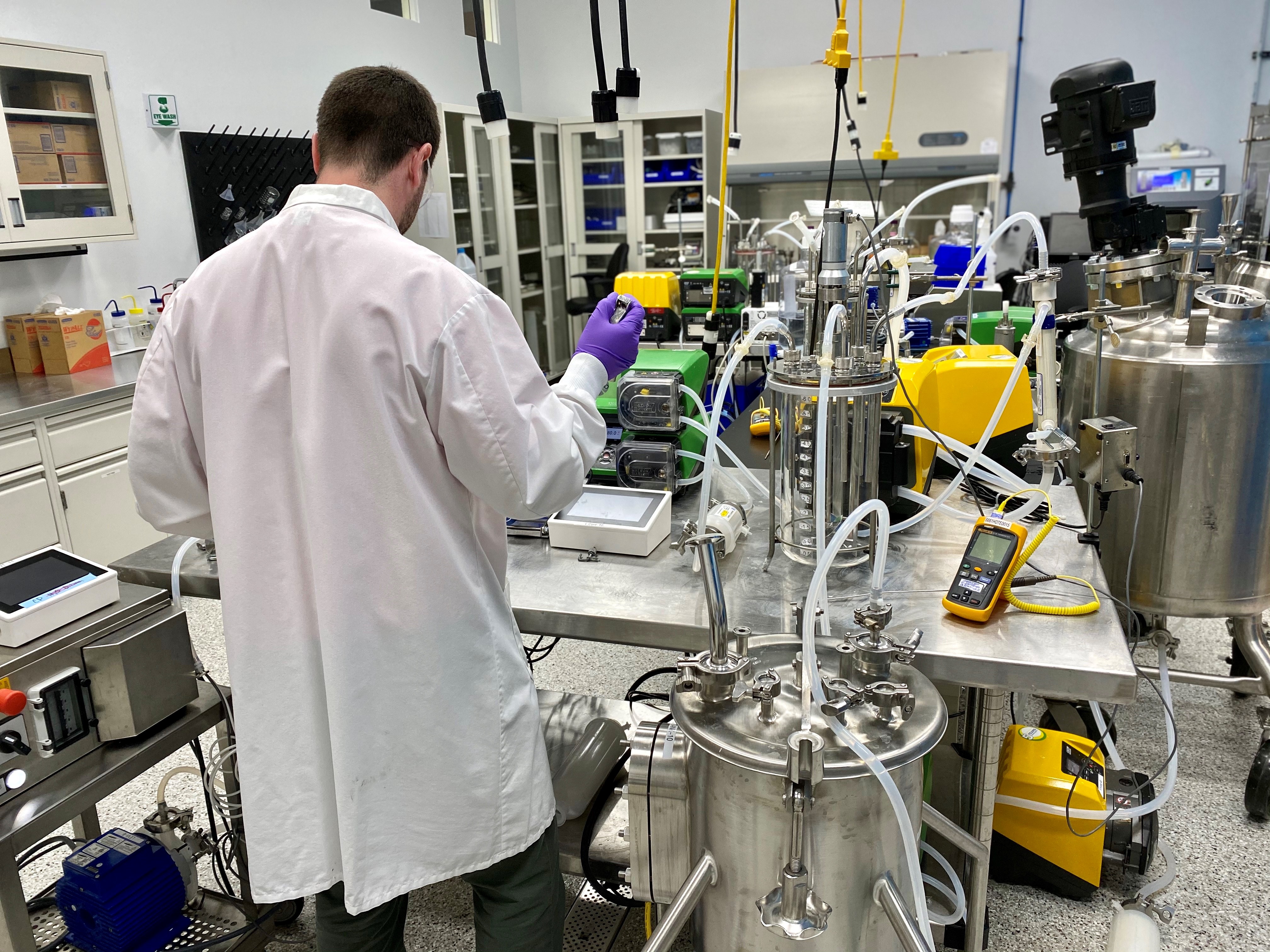Archives by Year: 2024
Animal pharmaceuticals are treatments that are designed to prevent, diagnose, or treat disease in animals to promote overall well-being. This goal applies to a variety of animals, including livestock, poultry, and even wildlife.
The world of animal health pharmaceutical development has also played a significant role in the fast-growing and evolving world of pet pharmaceuticals. Read on to learn about all of these aspects and how Oakwood Labs can partner with your facility for effective pharmaceutical development.
Our Process for Animal Health Drug Development
The demand for animal health pharmaceuticals is rising due to population growth, urbanization, changes in dietary habits, increased awareness of animal welfare, and more. To keep up with this demand, the industry continues to shift via research, new technology, and regulations that address the evolving needs of animals.
Discover the advantages of animal health pharmaceutical development:
- Improved animal health and welfare – Veterinary pharmaceuticals are a way to provide effective treatments for infections and chronic conditions. Just like humans, pets and livestock need treatments when they fall ill or have an ongoing condition, and these treatments make symptoms much more tolerable for the animal and its owner.
- Disease prevention and control – Injectables and other preventative medicines help control the spread of infectious diseases among animals, which reduces the risk of outbreak and transmission to other animals and even humans in some cases.
- Companion animal care – Pharmaceuticals for pets address varied health concerns, including pain management, behavioral issues, and chronic diseases. Having medicines that treat these problems gives owners a way to provide optimal care for their pet, fostering stronger bonds.
- Food safety and security – Pharmaceuticals are critical for maintaining the health of livestock and poultry, which leads to safer and higher-quality animal-derived food products. This results in a better food supply chain by reducing the risk of foodborne illnesses.
FAQs About Animal Health Pharmaceutical Development
To help you get a better understanding of animal health pharmaceutical development, we listed some FAQs that might clear up some confusion on the subject.
What is the general process for animal health drug development?
Animal health pharmaceutical development follows a similar process to that of drug manufacturing for humans. The stages include research and discovery, preclinical testing, regulatory approval, clinical trials, manufacturing, quality control, and post-market surveillance. The FDA oversees the approval and safety of animal health pharmaceuticals, ensuring that they meet the standards for efficacy.
What are some recent developments in animal health pharmaceuticals?
Discoveries in the area of animal health pharmaceutical development are being made constantly. Some of the more notable ones made recently include the development of novel drug technologies, the discovery of new treatment modalities, and the use of genomics and biotechnology to develop customized medicine for animals.
How do long-acting injectables benefit animal health drug development?
Long-acting injectables offer sustained therapeutic effects through a single injection, which is convenient for both animals and their caregivers. This method of administration minimizes stress for animals and improves treatment adherence, which leads to better outcomes for a variety of health conditions.
Work with Oakwood Labs for Animal Health Drug Development
At Oakwood Labs, we have a full-service cGMP manufacturing facility that hosts a range of contract manufacturing services. We produce commercial products for use by both humans and animals, and our batch sizes range from 1,000 to 20,000 vials per batch. In our GMP manufacturing facility, we are able to accomplish the following:
- In-house QC microbiology and QC chemistry
- Raw material dispensing and weighing
- Non-aseptic formulation
- Equipment preparation and staging
- Compact and portable equipment train
- Aseptic formulation
- Aseptic filling
- Aseptic lyophilization
- Vial capping
- Inspecting, labeling, and packaging
- Shipping and receiving
In addition to these capabilities, we also bring more than 20 years of experience to your project. We would love to be your partner in animal health drug development.
Contact Us Today About Animal Health Pharmaceutical Drug Development
When you are ready to get started with animal health pharmaceutical drug development, we are ready to assist.
Be sure to contact us today with any questions you might have.
Oakwood Labs is a global leader in sustained-release drug delivery. Our facility provides feasibility studies, analytical development, scale-up capabilities, GMP clinical trial material, GMP contract manufacturing, and sterile fill-finish.
Sterile fill-finish is the final leg of the pharmaceutical manufacturing process, where a substance is filled into vials, ampoules, or other containers deemed appropriate. After the substance is put into containers, it is ready to be sent out for distribution. Learn more about our capabilities for this part of the process below.
The Process for Fill-Finish Pharmaceuticals
There are a variety of reasons that sterile fill-finish is essential in the manufacturing of long-acting injectables. Patient safety is at the top of the list, however, as the approach ensures that the product is free from microbial contamination.
What the Process Entails
When you begin the sterile fill-finish step, you are almost at the end of the drug manufacturing process. However, this is a critical point of the overall manufacturing process because it needs to be done correctly to ensure that your drug is safe for patients. At this point, you’ll want to request help from a fill-finish CDMO who can oversee the process properly.
Some of the steps that will be completed will include:
- Filling – In the filling process, the drug is placed into the final product containers under controlled and sterile conditions. Finish and fill services must be completed in a sterile environment to prevent contamination. For this reason, these services are performed in a cleanroom that has controlled air quality, temperature, and humidity. Additionally, it is important to ensure that sterile filling techniques are also applied to equipment and packaging.
- Container closure – It is important to select the appropriate container closer that is going to maintain the sterility and stability of the drug. Whether this is a vial, syringe, ampoule, or something else, the team you work with will help find the right solution for your application.
- Quality control – In the process of fill-finish for pharmaceuticals, rigorous quality control is practiced to ensure that the product meets regulations. Not only is the product tested throughout the process, but it also undergoes environmental monitoring and final product review to ensure that it is sterile and potent, and that it meets all other criteria that is required.
- Labeling and packaging – Once the product is filled, the finished item is labeled and packaged according to regulations and any requirements provided by outside sources.
- Regulation compliance check – It is important for aseptic, CDMO facilities to adhere to regulatory guidelines like Good Manufacturing Practice (GMP). This helps to ensure safety, efficacy, and quality, completing the final steps of the finish and fill process.
When you choose to work with a fill-finish CDMO, you can also receive different batch sizes to meet your project’s needs. From small-scale clinical trials to large-scale commercial production, our processes can be adapted to your specifications.
Let Oakwood Labs Be Your Fill-Finish CDMO
Oakwood Labs operates a fully compliant aseptic GMP facility. Our FDA-approved facility is headquartered near Cleveland, Ohio and centers on the development and manufacturing of sustained-release injectables for the pharmaceutical industry. We focus on creating pharmaceutical products that provide therapeutic benefits to our patients and excellent returns for our partners.
Whether you need assistance with fill-finish pharmaceutical services or something else, we are here to help. Other services we provide include:
- Formulation and analytical development activities
- Accelerated and long-term stability studies
- Scale-up, validation, or engineering batches
- Complete method transfer and validation
- Batch record and protocol development
Consult Our Finish and Fill Services Today!
If you are in need of pharmaceutical manufacturing, partner with Oakwood Labs to receive reliable and efficient services.
Contact us today to learn how you can achieve a sterile fill-finish with our CDMO.
Best known for their versatile role in a vast array of chemical applications, organic solvents play a crucial role in numerous sectors, including the medical industry.
To gain a better understanding of how these solvents can contribute to pharmaceutical practices and manufacturing techniques for drug delivery, review our complete guide for more information.
An Overview of Organic Solvents
As industry experts are aware, organic solvents are solvents that contain carbon atoms capable of either dispersing or dissolving one or more substances. Due to their chemical makeup, these solvents can be utilized in a variety of industries, such as textiles, cleaning, agriculture, and pharmaceuticals.
Additionally, common characteristics and properties of suitable organic solvents include the following:
- High volatility
- Acid-based properties
- Low boiling point
- Suitable density
As opposed to some inorganic solvents, organic solvents can also be described as combustible and extremely flammable. That’s why we advise that those looking to work with organic solvents in long-acting injectables, or processes such as spinning and dyeing textiles, ensure that they are handling these carbon-based solvents with the utmost care.
The Role of Organic Solvents in Long-Acting Injectables
Organic solvents in pharmaceuticals, such as long-lasting injectables, can contribute to an expansive array of roles throughout the drug delivery process, such as the following:
- Dissolving drugs at high concentrations – Organic solvents can be utilized to dissolve drugs, such as biologics, that otherwise have a higher concentration and a lower aqueous solubility. That way, long-acting injectables can be administered at the appropriate viscosity and form drug depots under the skin’s surface.
- Forming drug depots – Drug depots, or depot injections, are longer-duration drugs that result in a slow absorption into the bloodstream. Though organic solvents can contribute to the formation of these drug depots, the administration of the drug into your muscle is best when using a depot.
- Determining the rate of release – Once the drug depot has formed, organic solvents decelerate the rate of their delivery, resulting in a more gradual, sustainable release and absorption of the medication over time.
A Look at Organic Solvents in Pharmaceuticals: Their Industry Uses and Beyond
Along with their inherent contribution to the production of long-lasting injectables, organic solvents in pharmaceuticals play many key roles in the total industry. Beyond mainly being utilized as reaction media, organic solvents are used in the following processes:
- The purification of synthesis products
- Excipients, such as coloring agents, preservatives, and fillers
- The bioavailability of orally administered protein-active sites
- Semiempirical models of meditated solubility
- Antisolvent crystallization techniques in pharmaceutics
Additionally, organic solvents can even be used in water-based cleaning solutions. This is because they are capable of penetrating oily soil deposits while also dissolving in water.
FAQs About Organic Solvents, Their Capabilities, and More
What are the most common organic solvents used in pharmaceutical manufacturing?
The most common applications when working with organic solvents in pharmaceuticals include the following:
- Acetone
- Dimethylformamide
- Diethyl ether
- Benzene
- Isopropanol
- Ethanol
What safety precautions should be taken when working with organic solvents in pharmaceuticals?
As stated previously, organic solvents can be extremely flammable and volatile, so handling them with care is essential. With that in mind, here are some stringent safety regulations you should abide by during the manufacturing process:
- Gloves and safety glasses should be worn when handling the materials
- A fume-hood is required when pouring out organic solvents
- Spill kits and eyewash stations should be readily available in the workspace
- Flammable liquids, such as bleach, peroxides, and acids, should be stored away from organic solvents
Can organic solvents be reused or recycled?
Yes, organic solvents can be recycled easily and reused in syntheses. This includes collected solvents that are separated by distillation and have different boiling points.
Contact Oakwood Labs for More Information
As your trusted resource for sustained-release injectables and other services, Oakwood Labs is well-equipped with the necessary tools to satisfy your application needs.
For more information about organic solvents in pharmaceuticals, long-acting injectables, and more, please reach out to our team today. We look forward to assisting you.
Long-acting injectables are favored in the medical field due to their effectiveness and convenience, as their injection methodology allows for the gradual release of medication into the bloodstream. In post-operative care, the alleviation of pain is vital not only for recovery, but for the comfort of the patient. With the help of long-acting injectable drugs for post-surgical pain management, patients can experience a more effective recovery.
The History of Long-Acting Injectables
Long-acting injectable drugs were first introduced as a treatment for people with chronic schizophrenia. These long-acting injectable antipsychotic drugs were created as an effort to solve the issue of poor adherence to oral medications. Some notable points in the history of long-acting injectables include the following:
- 1950s – 1970s – Long-acting injectables were created to help manage conditions such as schizophrenia. In 1952, chlorpromazine (CPZ) was developed in Paris, offering an effectiveness greater than that of older drugs on the market. Then in 1966, thanks to G.R. Daniels, a medical director at the time, the first long-acting injectable was created. This first injectable was AP fluphenazine enanthate, with fluphenazine decanoate being created just eighteen months later.
- 1980s – 1990s – During this time, long-acting injectables for second-generation antipsychotics were introduced. Between 1988 and 1992, Risperidone was first developed by Janssen-Cilag. Its purpose was to treat behavior issues in children and adolescents.
- 2000s – present – Long-acting injectables have come a long way since their creation. With their medication methodology, they can provide better adherence to timelines, facilitate proper dosing, and free patients from having to take oral medications every day. With continuing research on long-acting injectables, we are seeing uses in areas such as contraception, chronic and acute pain, antiretroviral therapy, and more.
The Role of Long-Acting Injectables for Post-Surgical Pain Management
A key factor of post-surgical work is minimizing patient pain, giving them the time they need to heal. With the use of extended-release drugs for post-surgical pain management, doctors are better able to effectively manage pain for their patients and promote an expedited recovery process.
Types of Injectables Used for Post-Surgery
NSAIDs, or nonsteroidal anti-inflammatory drugs, are medications that reduce fever, pain, and inflammation. Looking at postoperative care, NSAIDs help in mitigating pain, minimizing the reliance on opioids, and fostering a healing environment. You may be familiar with some over-the-counter NSAIDs such as ibuprofen or aspirin.
NSAIDs are known to prevent blood from clotting, which can definitely be beneficial in post-surgery situations. In cases such as orthopedic procedures that involve prolonged immobility, there is an increased risk of blood clot formation. NSAIDs help prevent that blood clotting, specifically in the veins.
Some common NSAIDs that have been used as long-acting injectables for post-surgery pain management include:
- Toradol (Ketorolac) – This NSAID is used to relive pain and is commonly available in injection or tablet form. The injections work about thirty minutes after administration and the effects can last up to six hours. Often prescribed for post-surgery pain, it typically is distributed as a one-time injection. However, some people may receive a shot every six hours. This will depend on factors such as body weight, age, drug interactions, and others.
- Diclofenac sodium – This medication is another NSAID used to treat adults with mild to moderate pain. It can be used for osteoarthritis, low back pain and for post-operative patients. Similar to Toradol, the effects may start to work immediately after the injection.
- Caldor – This ibuprofen injection works by reducing fever and treating pain in the body. It helps manage pain as an adjunct to opioid analgesics.
- Ketoprofen – Ketoprofen can help with acute and chronic pain, both for the traumatic and rheumatic origin. Additionally, it can help alleviate postoperative pain, specifically in the orthopedic field. While ketoprofen is offered as an injectable, that is not the intended use for humans. There is an oral tablet for humans, only available with a doctor’s prescription. The injectable form is actually intended for animals, such as horses. In horses, it’s used for musculoskeletal pain or inflammation, abdominal pain, and other inflammatory conditions. It can also be used effectively for cattle, goats, sheep, and pigs.
The Capabilities of Oakwood Labs
At Oakwood Labs, we are a leading developer of sustained-release pharmaceuticals and have over 20 years of experience in drug encapsulation. We are here to offer support throughout the development of different types of long-acting injectables.
Our facilities can provide the following to help you achieve your project goals:
- GMP manufacturing (commercial and aseptic)
- Pre-formulation development
- Phase I, II, and III clinical trial manufacturing
- Scaling formulation
- ICH compliant stability tests
- Feasibility studies
- Toxicology batch manufacturing
Contact Us to Learn More
With our history of compliance and commitment to quality, we continue to be a leader in injectable pharmaceutical development. If you’re wanting to learn more about injectable development or our other capabilities, contact us today.





